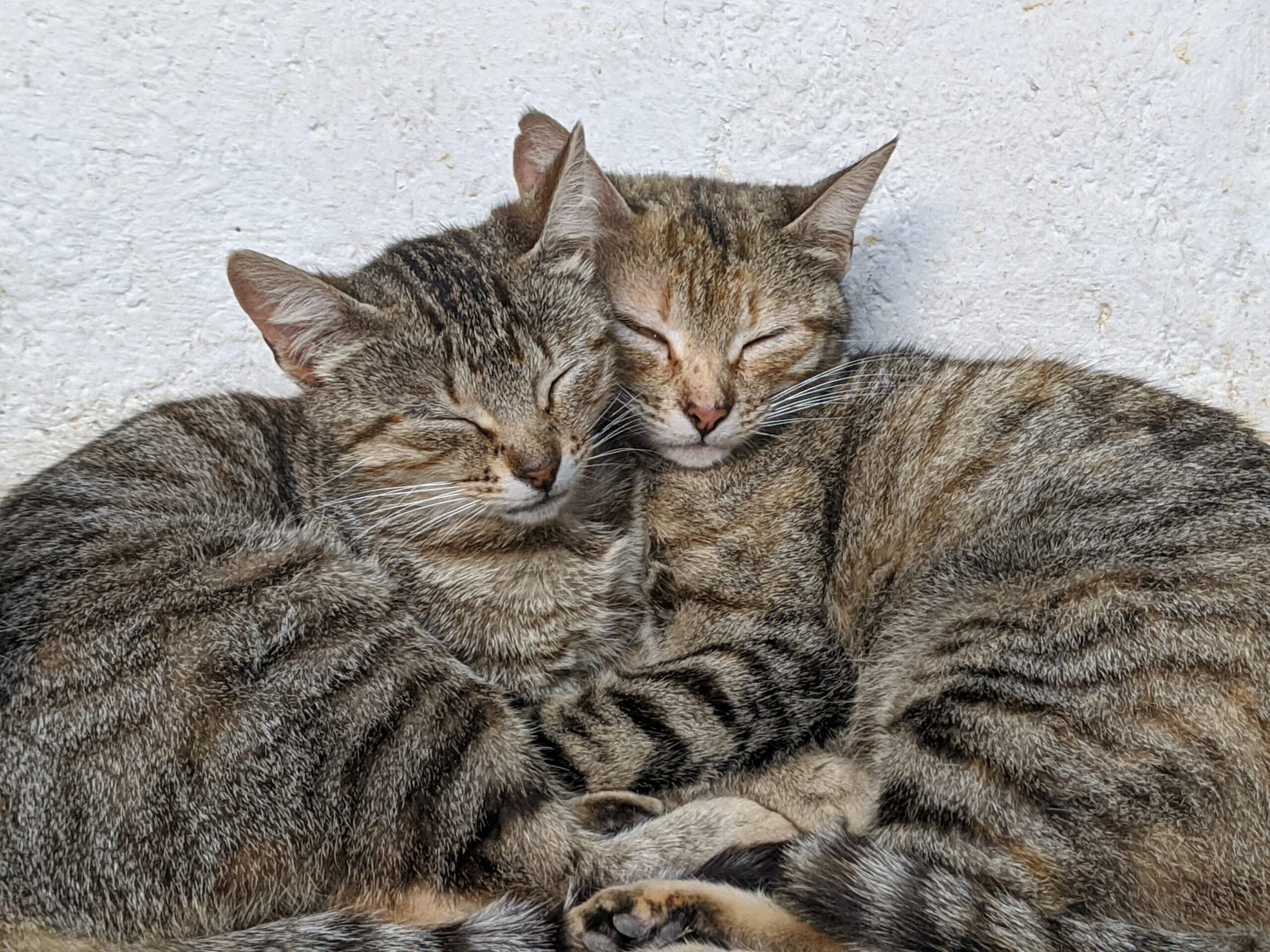Pets and Their People Blog
Ideal Pairings to Consider When Getting a New Cat
Thinking of adding another cat to your household? In this article, I describe the best combination of cats, based on the advice in professional articles and the experiences of animal welfare workers.
Best Cat Pairings
What do I mean by best combination? It’s when all members of a group of cats live together peacefully, stress-free, and happy, and with acceptable behavior.
International Cat Care (ICatCare) says siblings who grow up together make the best pairings. ICatCare noted that this is especially true if “there was evidence of sociability with each other as kittens and their temperaments remain complementary.”
Gender is considered the next most influential factor in cat pairings. Repeatedly, male-male pairings are recommended, then male-female. All-female combinations are the least recommended. Award-winning writer and cat expert Ingrid King says that neutered male cats are generally believed to be more accepting of other cats. Some animal welfare workers offered the theory that the male-male pairing works best due to their similar rough-and-tumble play style. Although male-female pairings are next in line, one shelter reported that their most common return was young males with older females, because the energetic young male will tend to bully the older calmer female. Female-female pairings are the least recommended, with the main reason given being that females are more cautious and territorial.
Age is also considered a significant factor when pairing cats.
Cat behavior consultants, including myself, would emphatically advise: don’t combine kittens with senior cats! Younger cats need an outlet for their energy, while older cats typically need more naps.
In addition, some animal welfare workers even advise that a cat as young as four or five years shouldn’t be paired with a kitten, due to these cats having reached maturity and having their personalities set. Bottom line, cats probably do best with cats close to their own age.
Interestingly, an Australian study on cat aggression found that a cat’s age correlated with the likelihood of their owners’ reporting them as being aggressive toward other cats, and advises that starting a rotation system for older cats (particularly older females) could be one way to prevent conflict. From this study, one can conclude gender and age are important components of a successful cat relationship.

Health, size, and experience are potential factors in cat pairings too. With regards to health, some conditions can lead to disease-specific odors, change in metabolism, discomfort, pain, and other factors that could affect how a cat appears and/or behaves towards others in the group. Ingrid King advises that cat owners with an elderly sick cat not bring another cat into the home until the resident cat had passed away. She explains that, “The stress of a new addition to the family may aggravate your older cat’s condition, and could actually shorten his life.” King also contends that cat size can matter in feline relationships. According to her, the theory is that cats of similar size and build will accept each other more quickly.
With regards to a cat’s experience, animal welfare workers sometimes won’t adopt a cat into a home with another cat if either of the cats have never been housed with other cats. At the very least, they’ll pair on the basis of personality, which some cat researchers contend is the most important factor.
Real-World Scenarios
To prepare for this article, I read many examples of the best personality pairings. Many of them amounted to pairing cats of similar personalities: pair playful with playful, high-energy with high-energy, easygoing with easygoing, a cat-snuggling cat with another cat-snuggling cat. Other examples were more about mixed personality pairings. For example, a timid cat might do better with a mellow cat, while an assertive cat will probably do better with a self-assured cat. Then there were the examples of cats that might be best as an only-cat: territorial cats or those cats that become agitated when they see other cats were most often cited here. Finally, if you’re fortunate enough to have one of those cats who loves everyone, any pairing will probably work.
Cautions
As I wrap up this article, I’d like to leave you with a few cautions:
- First, this pairing is about your current cat(s). Does your cat want a companion, a playmate, or even another cat in your home? Some animal shelters and rescues offer a Foster To Adopt option, which would allow you to determine the best pairing for your cat.
- Second, even the best pairing will only succeed if cats are properly introduced and provided with sufficient resources.
- Third, adding another cat might change the dynamic of your household. Resident cats that now get along may not get along when you add an additional cat, so proceed with caution.
- Finally, choosing a pairing based on these recommendations may give you the best chance of success, but there are no guarantees.
I’d love to hear about your current household composition. Does your experience support or contradict the findings of the researchers and the observations of the cat experts? My cats follow the recommendations in some ways but not in others. They are similar in age, size, and experience, but they are unrelated and female. If you’d like to add your personal situation, please fill out my survey. Thanks!
About the Author

Allison Hunter-Frederick is a Certified Cat Behavior Consultant, Trainer, and Educator. She is also the mother of three fur kids and several revolving foster cats, host mom to international students, and wife of a supportive husband. Through her business Allison Helps Cats LLC, she uses her knowledge of cats to help cat owners and animal shelters with their cat behavior needs. Allison is a member of the PPG Cat Committee. She learned a lot about cat pairings by writing this article!
